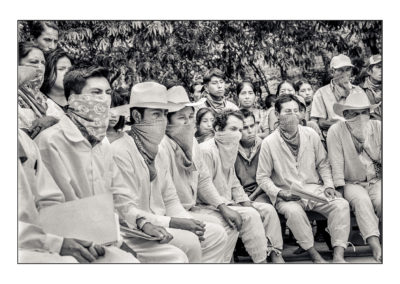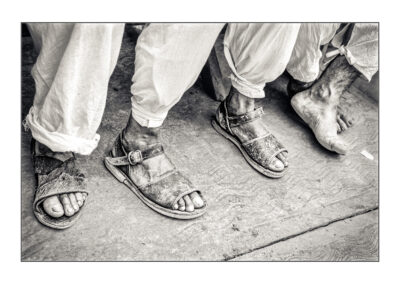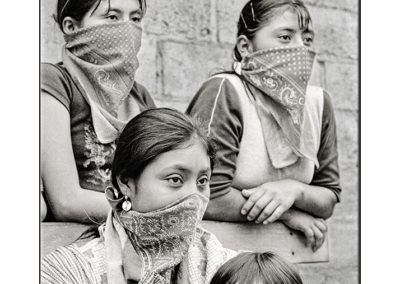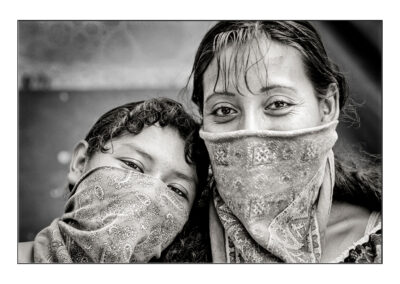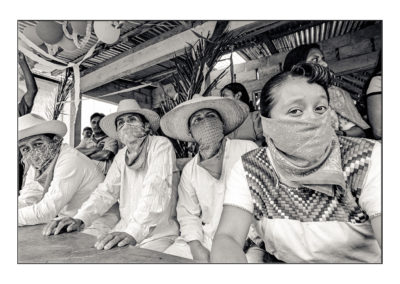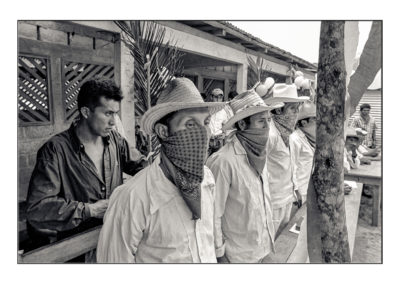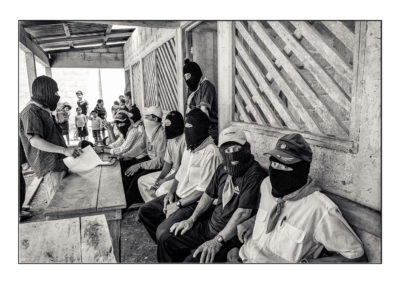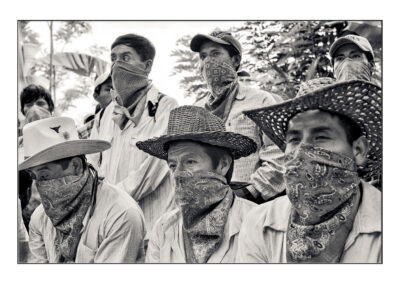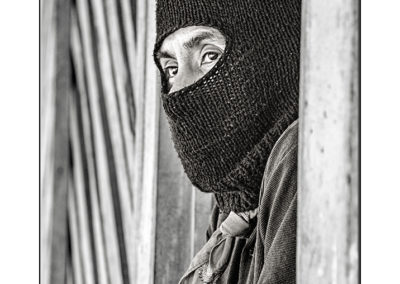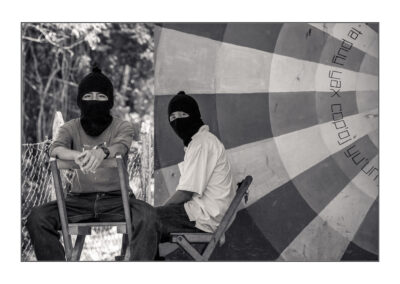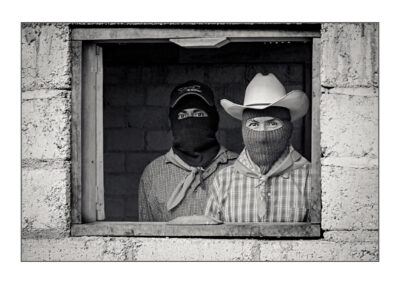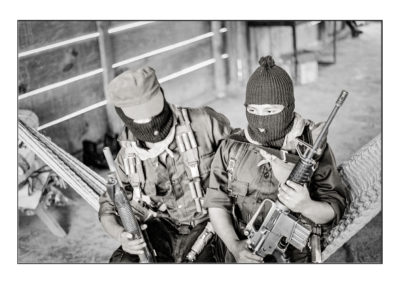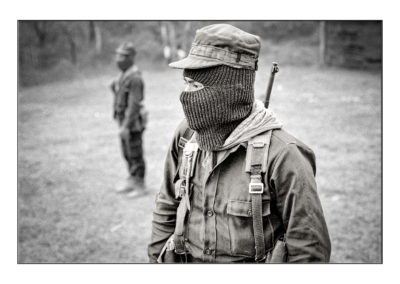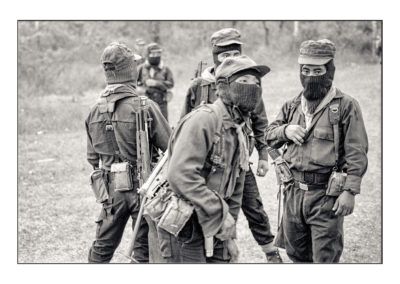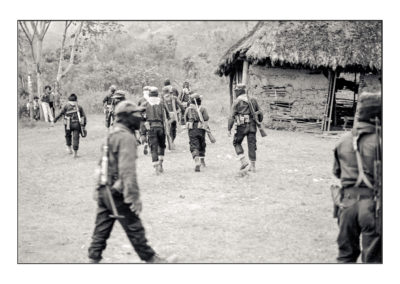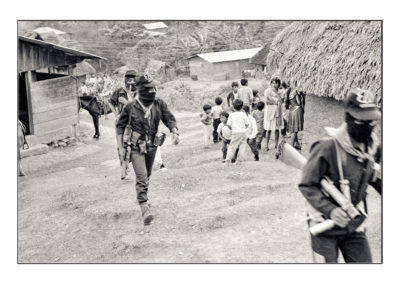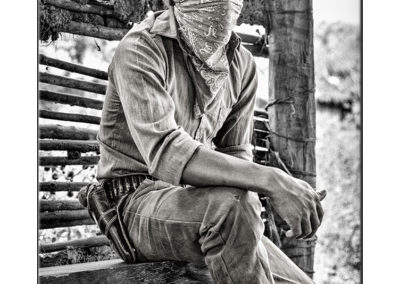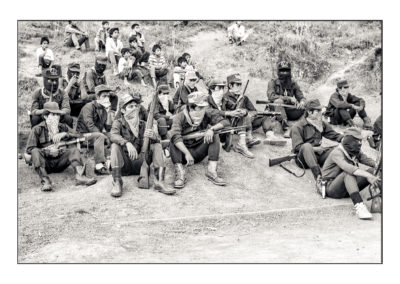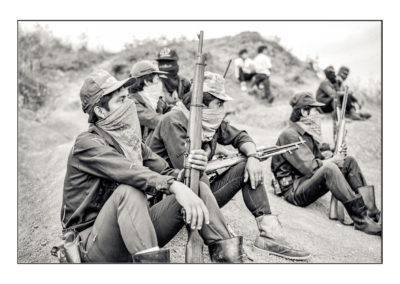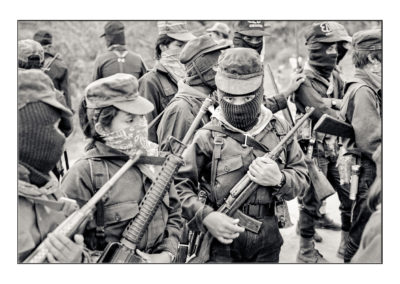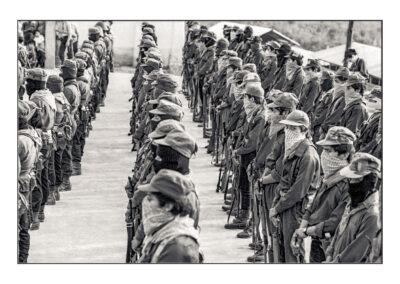La rivolta zapatista
| leggi il commento in fondo alla pagina | lee el comentario al final de la página | read the comment at the bottom of the page |
Italiano
La notte del 1° gennaio del 1994, mentre il mondo occidentale stava festeggiando il capodanno, un nutrito gruppo di indigeni di origini maya, armati in modo alquanto approssimativo e che dichiaravano di appartenere all’Esercito Zapatista di Liberazione Nazionale, osarono sfidare il governo messicano occupando numerose città e villaggi del Chiapas. Gli indios erano improvvisamente usciti dalla storia precolombiana per entrare nella modernità del mondo contemporaneo e dare vita ad una lotta per la dignità e per il rispetto dei diritti di gente che da ormai cinquecento anni subiva soprusi di ogni genere.“Nel nostro cuore c’era tanto dolore, tanta era la nostra morte e la pena che non entravano più, fratelli, in questo mondo che i nostri antenati ci hanno dato per continuare a vivere e a lottare …. Che la voce del sangue che ci ha uniti quando la terra e i cieli non erano di proprietà di grandi signori ci chiami un’altra volta, che i nostri cuori uniscano i nostri passi, che i potenti tremino, che si rallegri il cuore del piccolo e del miserabile, che abbiano vita i morti di sempre.”Questo fu uno dei primi comunicati e quando lo lessi capii subito che stava accadendo qualcosa di assolutamente nuovo e che dovevo ad ogni costo raggiungere il Chiapas per documentarlo.
Español
La noche del 1 de enero de 1994, mientras el mundo occidental celebraba el año nuevo, un numeroso grupo de indígenas de origen maya, armados de manera bastante rudimentaria y que declaraban pertenecer al Ejército Zapatista de Liberación Nacional, se atrevieron a desafiar al gobierno mexicano ocupando numerosas ciudades y pueblos de Chiapas. Los indígenas habían salido repentinamente de la historia precolombina para entrar en la modernidad del mundo contemporáneo y dar vida a una lucha por la dignidad y el respeto de los derechos de un pueblo que llevaba ya quinientos años sufriendo abusos de todo tipo.“En nuestro corazón había tanto dolor, tanta era nuestra muerte y la pena que ya no cabían, hermanos, en este mundo que nuestros antepasados nos han dado para seguir viviendo y luchando… Que la voz de la sangre que nos unió cuando la tierra y los cielos no eran propiedad de grandes señores nos llame otra vez, que nuestros corazones unan nuestros pasos, que tiemblen los poderosos, que se alegre el corazón del pequeño y del miserable, que tengan vida los muertos de siempre.”Este fue uno de los primeros comunicados y cuando lo leí, entendí de inmediato que estaba ocurriendo algo absolutamente nuevo y que debía, a toda costa, llegar a Chiapas para documentarlo.
English
On the night of January 1, 1994, while the Western world was celebrating the New Year, a large group of indigenous people of Maya origin, armed rather rudimentarily and declaring themselves to belong to the Zapatista Army of National Liberation, dared to challenge the Mexican government by occupying numerous towns and villages in Chiapas. The indigenous people had suddenly emerged from pre-Columbian history to enter the modernity of the contemporary world and give life to a struggle for dignity and respect for the rights of people who had been suffering all kinds of abuses for five hundred years.“In our hearts, there was so much pain, so much of our death and suffering that it no longer fit, brothers, in this world that our ancestors gave us to continue living and fighting… May the voice of the blood that united us when the earth and the skies were not owned by great lords call us once again, may our hearts unite our steps, may the powerful tremble, may the hearts of the small and the miserable rejoice, may the dead of all times come to life.”This was one of the first communiqués, and when I read it, I immediately understood that something absolutely new was happening and that I had to reach Chiapas at all costs to document it.

